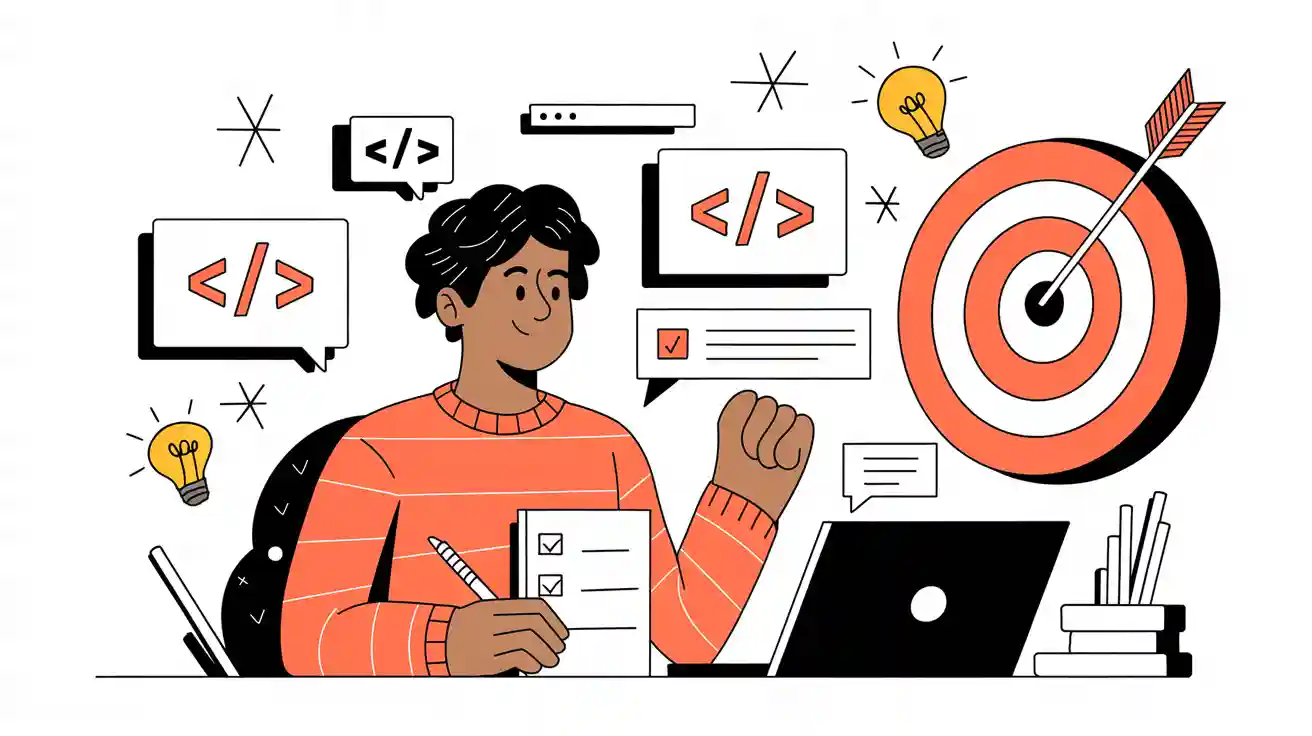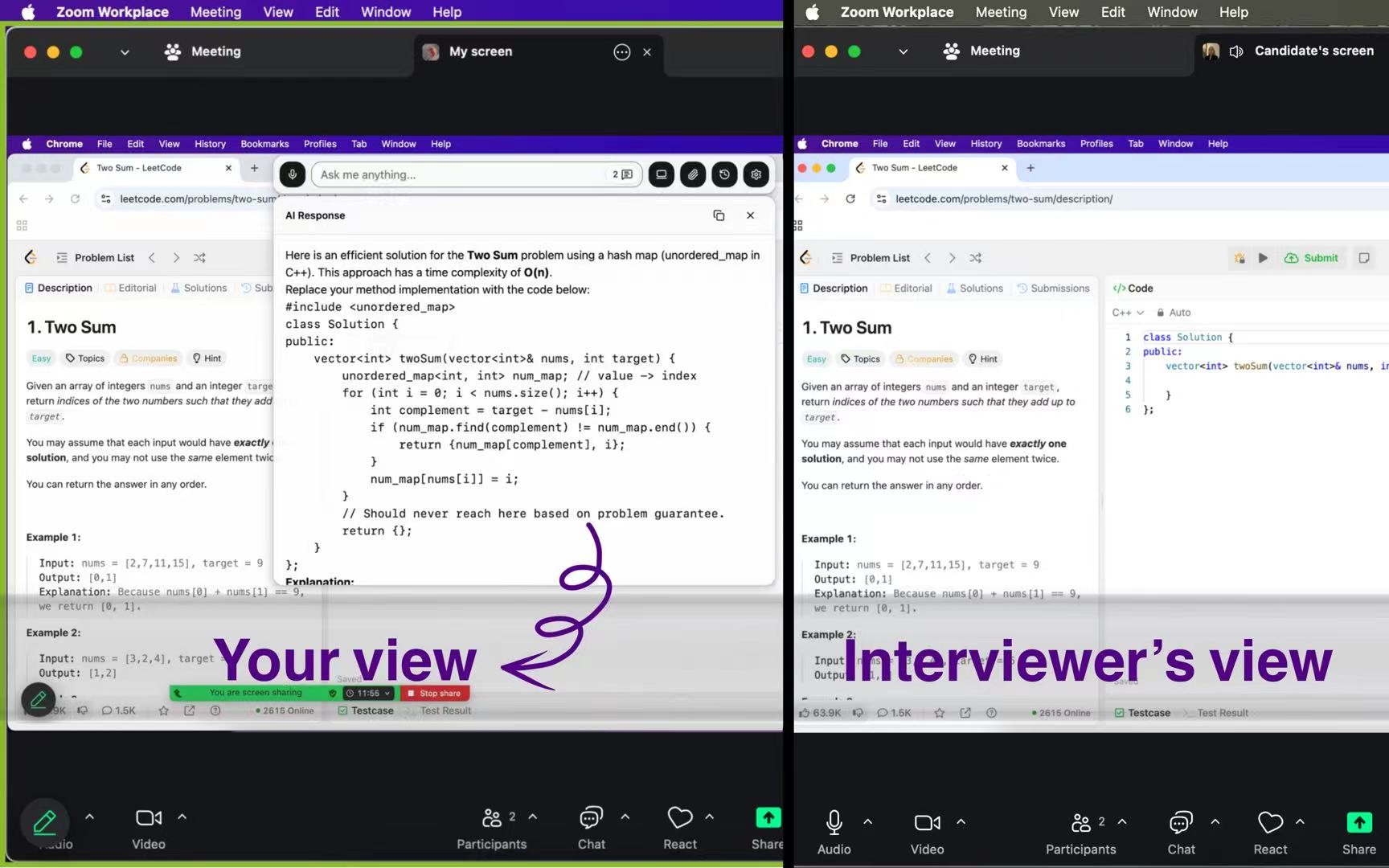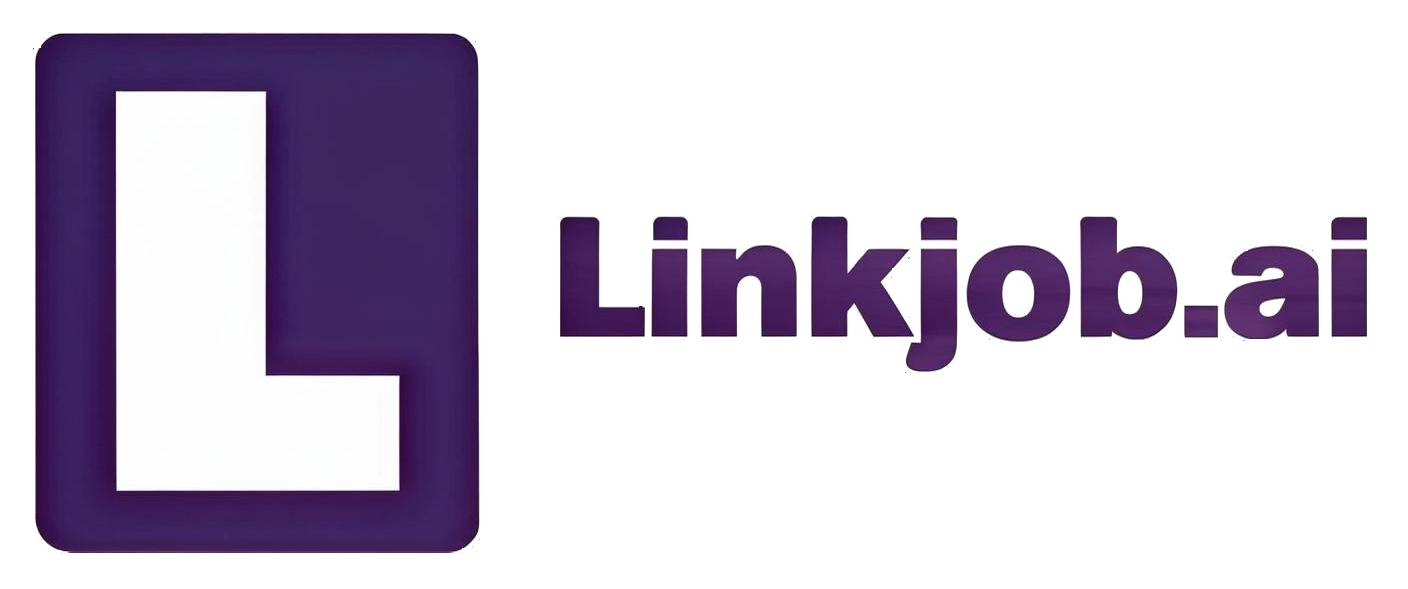The ES6 Interview Questions I Got in 2025 and the Answers Got Me Hired

When I sat down for my javascript interview in 2025, I faced real es6 interview questions that tested my javascript skills from every angle. I needed to give clear answers to tough javascript questions under pressure. I practiced javascript every day, focusing on es6 concepts and real interview scenarios. Sometimes, I felt nervous or got stuck on tricky javascript questions. Getting feedback helped me improve my answers. I used tools to simulate interviews and get real-time support, which made tackling es6 and javascript questions much easier.
I have to say, Linkjob.ai is really incredibly useful. During the interview process, it's completely invisible—even if the interviewer requires screen sharing, the other party can't see at all that I'm using AI.
ES6 Interview Questions 2025
When I prepared for javascript interview questions, I noticed that interviewers focused on both the basics and the latest must-know concepts in es6. Here are the main es6 interview questions I faced and how I tackled them:
Let, Const, Var
The first question almost always asked me to explain the difference between let, const, and var. I remembered that var is function-scoped and can be redeclared, but it often causes bugs. Let is block-scoped and can be updated, while const is also block-scoped but cannot be reassigned. Many candidates think const makes objects immutable, but it only prevents reassignment of the variable itself.
Tip: Prefer const by default, use let when you need to reassign, and avoid var to reduce bugs.
Arrow Functions
Interviewers love to ask about arrow function syntax. I explained that arrow functions use =>, do not have their own this, and are not suitable as object methods. They also do not have their own arguments object and cannot be used as constructors.
Feature | Traditional Function | Arrow Function |
|---|---|---|
Syntax | function keyword |
|
this Binding | Dynamic | Lexical |
Arguments Object | Yes | No |

Template Literals
I got questions about template literals. I showed how backticks allow string interpolation and multi-line strings, making code cleaner.
Destructuring
Destructuring in es6 came up often. I explained how it lets me unpack values from arrays or objects into variables. For example:
const [a, b] = [1, 2];
const {name, age} = {name: 'John', age: 30};
Spread and Rest
I answered questions about the spread and rest operators. Spread expands arrays or objects, while rest collects function arguments into an array. For example:
function sum(...args) { return args.reduce((a, b) => a + b, 0); }
let arr = [1, 2];
let arr2 = [...arr, 3];
Promises and Async/Await
Asynchronous programming is a hot topic. I got several javascript interview questions about promises, async function, and how to handle async code. I explained how promises help manage async operations and how async/await makes code easier to read.
Classes and Inheritance
Modern javascript uses classes for object-oriented code. I described how es6 classes and inheritance work, and how they differ from old prototypes.
Modules
I answered questions about es6 modules, explaining import/export syntax and why modules help organize code.
Map, Set, WeakMap, WeakSet
Interviewers asked about these data structures. I explained that Map and Set store unique values or key-value pairs, while WeakMap and WeakSet help with memory management.
Symbol
I got questions about Symbol, a unique and immutable primitive, often used as object property keys.
Iterators and Generators
I explained how iterators produce values one at a time and how generators (using function*) can pause and resume, making complex flows easier.
Event Propagation
Some javascript interview questions covered event propagation. I talked about bubbling, capturing, and best practices for managing event listeners.
Babel
Finally, I discussed Babel. I explained how it lets us use modern javascript by converting es6 code into code that works in older browsers.

Step-by-Step Answers
JavaScript ES6 Interview Questions
When I walked into my interviews, I faced a mix of classic and tricky es6 interview questions. Interviewers wanted to see if I understood both the basics and the deeper parts of modern javascript. Here’s how I tackled the most common javascript interview questions and gave answers that stood out:
I always started by listening carefully to the questions. If something wasn’t clear, I asked for clarification. This helped me avoid giving answers that missed the point.
I broke down my answers step by step. For example, when asked about let, const, and var, I explained the scope, reassignment rules, and best practices for each.
I made sure to mention real-world scenarios. For instance, I talked about how using const by default can prevent bugs in javascript code.
When I got questions about asynchronous programming, I explained how promises and async/await work, and why they make modern javascript easier to manage.
I didn’t just recite definitions. I shared how I use these features in my own projects, which made my answers more memorable.
Tip: Interviewers love when you explain your thought process. Walk them through your logic, and don’t be afraid to think out loud.
Code Examples
I learned that showing clean, readable code is just as important as knowing the right answers. Here’s how I presented code during javascript es6 interview questions:
I used meaningful variable names and kept my formatting consistent.
I explained each part of my code as I wrote it, so the interviewer could follow my thinking.
I handled edge cases by mentioning what might go wrong and how I’d fix it.
I broke big problems into smaller functions to keep my code modular.
Here are some examples I used in my interviews:
1. Destructuring Objects and Arrays
// Array destructuring
const [first, second] = [10, 20];
// Object destructuring
const user = { name: 'Alice', age: 25 };
const { name, age } = user;
I explained that destructuring makes code shorter and easier to read. It’s a big part of es6.
2. Using Spread and Rest
// Spread operator
const arr1 = [1, 2];
const arr2 = [...arr1, 3, 4];
// Rest operator in functions
function multiply(multiplier, ...numbers) {
return numbers.map(n => n * multiplier);
}
I pointed out that spread expands arrays or objects, while rest collects arguments into an array. Both use ..., but they do different jobs.
3. Promises and Async/Await
// Promise example
function fetchData() {
return new Promise((resolve, reject) => {
setTimeout(() => resolve('Data loaded'), 1000);
});
}
// Async/Await example
async function load() {
try {
const result = await fetchData();
console.log(result);
} catch (error) {
console.error(error);
}
}
I always wrapped await calls in try/catch to handle errors. This is a must in asynchronous programming.
4. Classes and Inheritance
class Animal {
constructor(name) {
this.name = name;
}
speak() {
return `${this.name} makes a noise.`;
}
}
class Dog extends Animal {
constructor(name) {
super(name); // Always call super() first!
}
speak() {
return `${this.name} barks.`;
}
}
I made sure to call super() before using this in subclasses. Skipping this step causes errors.
Note: Practice writing code on platforms like LeetCode. It helps you stay calm and focused during real interviews.
Common Mistakes
I noticed that many candidates, including myself at first, made similar mistakes when answering es6 interview questions. Here are the most frequent ones I saw and how I learned to avoid them:
I used to think passing null to a function with a default parameter would trigger the default value. Actually, only undefined does that.
I sometimes forgot to wrap dynamic keys in square brackets when creating object properties. This led to bugs where property names didn’t evaluate as expected.
Early on, I neglected to use try/catch with await, which caused unhandled promise rejections in asynchronous programming.
I once forgot to call super() in a subclass constructor before using this. That mistake gave me a ReferenceError.
I mixed up spread and rest syntax because both use
.... Spread is for expanding, rest is for collecting.I used arrow functions for object methods that needed dynamic this binding. This caused unexpected behavior.
I accidentally used single or double quotes instead of backticks for template literals. That stopped variable interpolation from working.
I confused named and default imports. Named exports must be imported with their exact names, while default exports can be renamed.
Pro Tip: Before your interview, review these common mistakes. Fixing them in practice will help you give stronger answers and avoid simple errors.
I always tried to improve my answers by asking for feedback after mock interviews. If I got a follow-up question I didn’t expect, I stayed calm and talked through my reasoning. This showed the interviewer that I could think on my feet and handle new challenges in javascript.
Preparation Strategies
Mock Interviews
When I started preparing for javascript interviews, I realized that mock interviews made a huge difference. Practicing with real javascript questions helped me get comfortable with the format and timing. I used mock interviews to test my knowledge of es6 features like arrow functions, destructuring, and promises. Each session gave me a chance to practice giving clear answers and to see where I needed to improve. Sometimes, I would ask a friend to act as the interviewer. Other times, I used online tools that focused on javascript interview questions.
Real-Time Feedback
Getting feedback right after answering javascript questions helped me learn faster. I could see which parts of my answers were strong and which needed work. When I made a mistake with es6 syntax or forgot to explain a concept, real-time feedback pointed it out. This way, I fixed my errors before they became habits. I also learned to handle nerves better because I knew what to expect.
Linkjob AI Assistant
One tool that really boosted my confidence was Linkjob. I used it for realistic mock interviews focused on javascript and es6. The AI interviewer asked me tough questions, listened to my answers, and gave instant suggestions. What made Linkjob special was how it adapted to my responses. If I missed something about promises or got stuck on a tricky topic, it followed up just like a real interviewer. During live interviews, Linkjob’s real-time assistant even listened in and suggested smart answers based on the job description and my resume. This support helped me stay calm and focused, even when I faced unexpected javascript questions.
Not Sure If Your ES6 Answers Are Good Enough to Get You Hired?
I used Linkjob to drill real ES6 interview questions, refine my explanations, and get instant feedback on code clarity and logic. Its mock interviews felt like the real thing, and it even coached me on how to handle follow-up questions.
If you’re aiming for front-end roles, this is the smartest way to level up before the actual interview, and stay sharp even during the live interview.
Practice Tips
Here’s what worked best for me when preparing for javascript interviews:
I reviewed arrow functions and how they handle the this keyword.
I practiced destructuring arrays and objects until it felt natural.
I wrote code with promises and async/await to handle asynchronous javascript.
I explored new es6 data structures like Set and Map.
I used template literals for cleaner, more dynamic strings.
By following these steps, I improved my answers and felt ready for any javascript interview.
Key Takeaways
ES6 Mastery
When I look back at my journey, I see that mastering es6 features changed how I write javascript. I focused on block-scoped variables like let and const. I used template literals for cleaner strings. Destructuring helped me pull values from arrays and objects quickly. I set default parameters in functions to avoid undefined errors. I relied on spread and rest operators to handle arrays and objects with less code. These skills made my javascript code faster and easier to maintain.
Arrow functions gave me a shorter way to write functions.
Promises and async/await helped me manage asynchronous code without callback hell.
Classes and generator functions made my code more organized and flexible.
I always tried to show real project experience. I talked about how I used es6 to refactor old code and improve performance. In interviews, I explained how I used these features to solve real problems.
Interview Confidence
Confidence in an interview comes from practice and preparation. I reviewed common es6 topics until I could explain them clearly. I learned to break down tough questions and share my thought process. When I faced unexpected questions, I stayed calm and used what I knew about javascript to find an answer.
Remember: Interviewers want to see how you think, not just what you know.
I also learned from every interview. If I made a mistake, I wrote it down and fixed it before the next round. Each experience made me stronger.
Tools for Success
The right tools made a huge difference in my preparation. I started with books like "Cracking the Coding Interview" to build my foundation. I worked through the Blind 75 problem list to sharpen my data structures and algorithms. I tackled harder javascript questions on CSES.fi and learned from every rejection.
Linkjob became my secret weapon. It gave me realistic mock interviews focused on javascript and es6. The AI interviewer adapted to my answers and gave instant feedback. During live interviews, Linkjob’s real-time assistant listened and suggested smart responses. This support helped me stay sharp and confident, even when the pressure was high.
Combining deep es6 knowledge with intelligent tools like Linkjob gave me the edge I needed to succeed in every javascript interview.
I shared real javascript interview questions and answers from 2025 that helped me land my dream job. If you want to master javascript and ace your next interview, focus on es6 concepts and practice every day. I found that using Linkjob for mock interviews and real-time support made a huge difference. When I combined solid javascript practice with smart tools, I felt ready for any interview. You can do the same. Keep learning, keep coding, and let es6 power up your javascript journey!
FAQ
What ES6 topic did I find hardest in interviews?
I struggled most with async/await and promises. They seemed confusing at first. I practiced writing small examples until I understood how they worked. Now, I feel much more confident.
How did I stay calm during tough JavaScript questions?
I took a deep breath and reminded myself that it’s okay not to know everything. I talked through my thought process. This helped me stay focused and show my problem-solving skills.
Can I use Linkjob for other programming languages?
Yes, I used Linkjob for Python and Java interviews too. The AI adjusted its questions and feedback for each language. That made my practice sessions feel real and helpful.
What’s one ES6 mistake I kept making?
I often mixed up the spread and rest operators. Both use ..., but they do different things. I fixed this by writing code examples.

